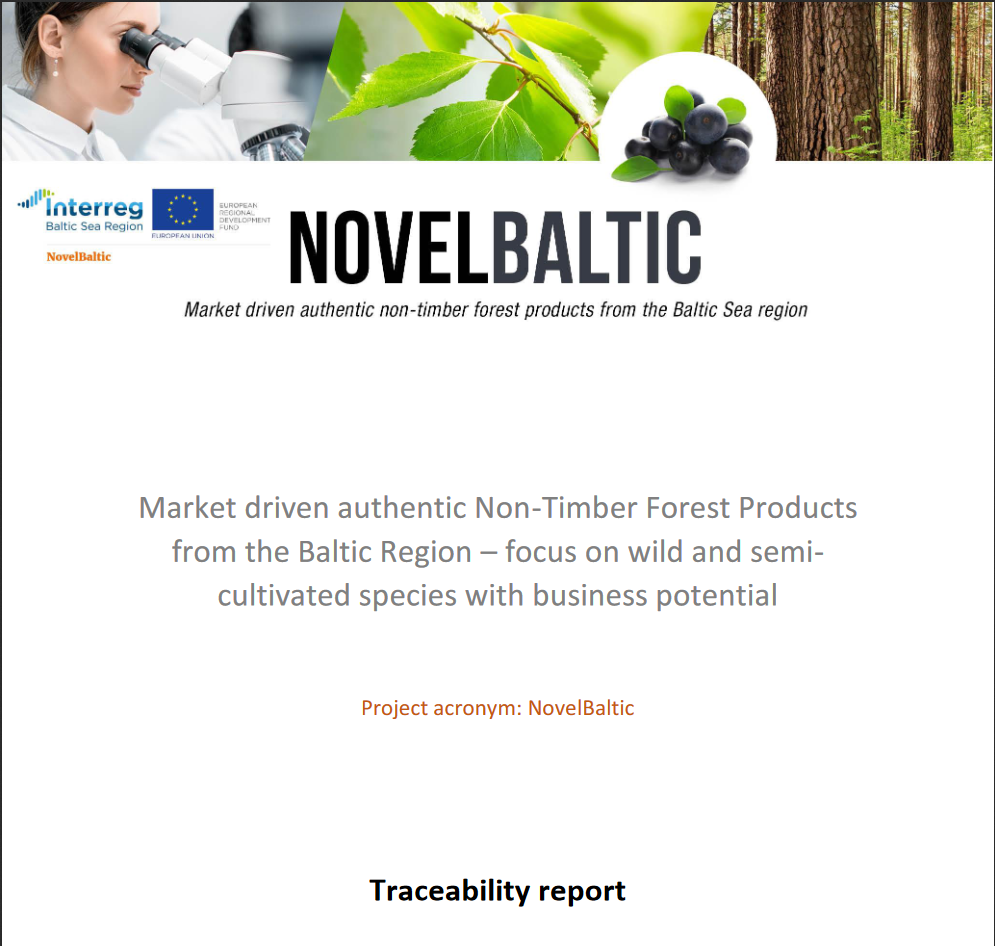In order to build consumers’ trust on the food market and the manufacturers of food products, it is essential that the chain of production from the acquisition of raw materials all the way till the end product is both transparent and systematic. Besides providing safety for consumers, cues indicating product origin, and the comprehensive traceability of raw materials, tell about product quality and, furthermore, could allow producers to sell their products at a premium price.
In order to prevent the jeopardization of the internal markets in food and feed, the EU has set laws for product traceability. However, the legislation is not very strict and definitive when it comes to describing what are the relevant properties to trace and how traceability might be implemented in practice. The aim of this study was to collect information on how raw material traceability works in practice with NTFPs, especially in their early stages of production, i.e. raw material acquisition.
Information was collected from a total of 19 companies in Finland, Latvia, Lithuania, and Norway, and based on the results, raw materials are traceable through the different stages of production as is required by the EU legislation. However, the ability to trace materials back to their origins varies from exact location to origin on country level. Nevertheless, based on this study, it is possible to acquire products with raw material traceability to exact origins. This information can be used in, for example, the development of authentication methodology, or in other scientific research where product origin needs to be known. In addition, this information can be provided to the customers if requested.

